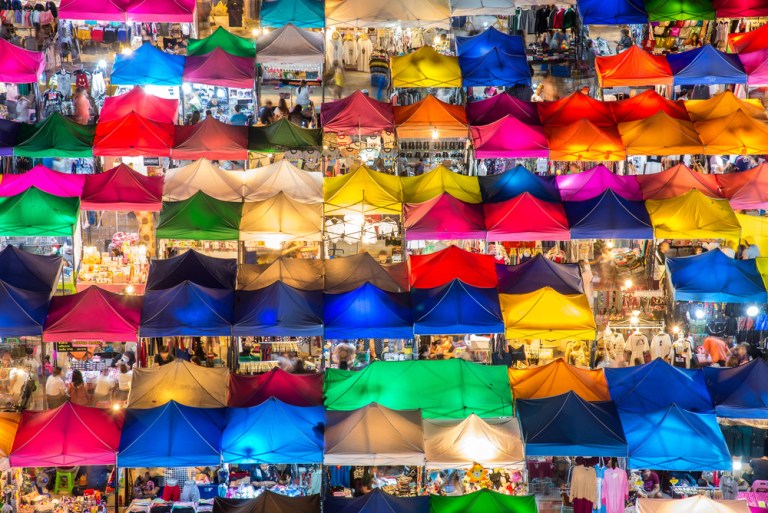
The pop-up store is nothing new in concept. Malls have had kiosks since time immemorial, and once a year around the country phantom Halloween shops appear overnight. But in the early 2010s, there began a pop-up renaissance of sorts.
After 2008, pop-ups were largely used as a cost-cutting effort by small, independent retailers unsure about opening a permanent location in the wake of the recession. But as the economy began to recover and commerce moved online, pop-ups have starting to thrive — and multiply.
Unlike the box stores and chains who dominated the retail industry for decades, pop-ups offer a more personal, unique and fun experience to customers. But the big dogs caught on quick. (“Made By Google,” anyone?)
The pop-up has transformed into a grand — as well as an inexpensive, low-risk and low-commitment — retail experiment for businesses of all sizes. And what better time to run a retail test than during the holiday rush?
The pop-up method isn’t beneficial only for holiday-related sales (consider Snapchat’s blending of pop-up and vending with their mobile cadre of Snapbots), but the season of shopping sure helps.
Especially since the holidays tend to get people out of their computer chairs and into physical stores — because it’s tradition. Seventy-five percent of consumers in the U.S. say shopping in-store is one of the best ways to get into the holiday spirit, and 95 percent of Americans plan to buy at least one gift in local stores this holiday season.
One major retailer experimenting with pop-ups this holiday season is Macy’s. The retailer reportedly looks to expand its Backstage concept — a store-within-a-store, clearance-apparel shop that usually sits somewhere within the larger Macy’s.
The plan is to place Backstage shops in 45 more stores for the holiday shopping season, though the company has yet to disclose any locations — possibly for hype-inducing purposes. There are currently 22 Backstage pop-ups in operation, 19 inside of Macy’s stores.
The real key for Backstage (or for any store-within-a-store or large retailer’s pop-up experiment, for that matter) is that the merchandise isn’t redundant, a discount rack in disguise. Macy’s Backstage has offerings sourced by the team and unique to the pop-up, so they’re on the right track.
For smaller, independent retailers and purely e-tailers, too much can never be said about securing a high-traffic area, having a clear brand message and stocking up on impulse items to sell. With less brand recognition, it’s also important to use social media and other channels to advertise the pop-up store long before it hits.
Not every company can rely on “if you build it, they will come.” None should, really. Even Snapbots have a website that forecasts their upcoming locations.
And don’t forget: The implication of urgency (who knows if this new merch will disappear come December 26) or the outright announcement that the store is only around for a little while can only work to fuel consumer intrigue in the short term. Long-term is more of a gamble, though a solid eCommerce presence year-round is sure to help retain some of that consumer interest.
If it doesn’t work out, not much cash will be lost in the process. But if it does work, retailers are looking to cash in on billions upon billions’ worth of holiday dollars and increased brand awareness.
And for customers — a quick online search for “[your location] holiday pop-up” will tell you most of what you need to know as the holiday shopping season approaches.